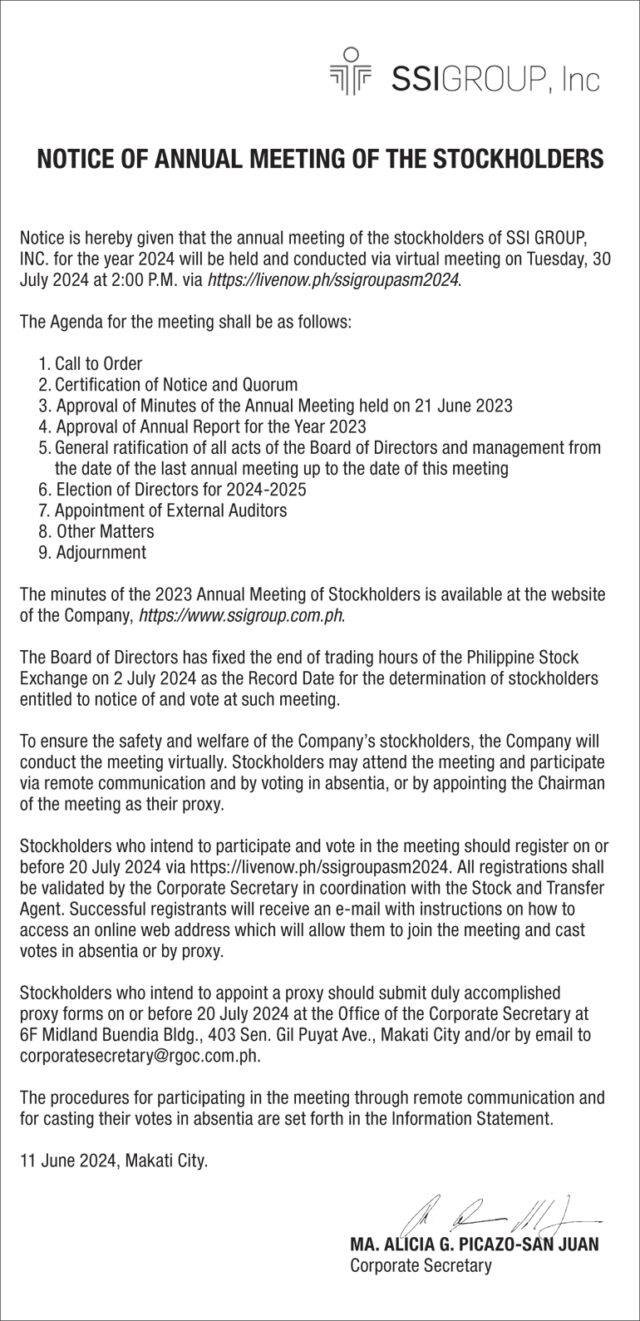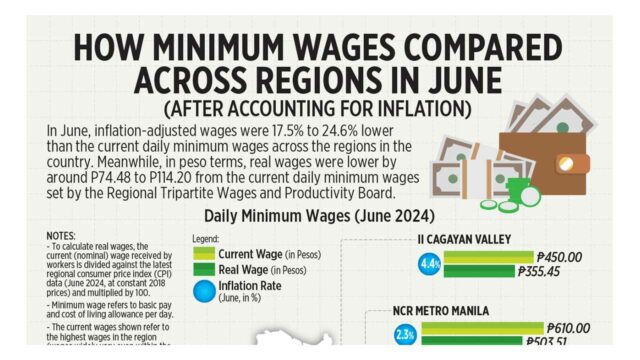Ordinarily, I, a Jesuit-educated Atenean would have not known Brother Andrew Gonzales, a De La Salle Christian Brother and President of De La Salle University. But our common friendship with Anthony C. Aguirre brought us together.
Upon the untimely death of Anthony, the Aguirre family established the Anthony C. Aguirre Foundation. (Mission Statement: To do the good that Anthony would have done if God had granted him a longer life). Brother Andrew was elected Chairman and I a member of the board of trustees.
Being a trustee in a foundation is not financially rewarding as the trustees are not even allowed to receive per diems.
Brother Andrew, a well-known food connoisseur compensated for this lack by holding our dinner-time board meetings at five-star restaurants with their delicious dishes.
It was during these sumptuous dinners, where Brother Andrew explained the delicacies before us while we discussed the projects we would fund in honor of Anthony, that Brother Andrew and I grew closer.
For a start, we discovered our Capampangan (Pampanga) roots (he from Apalit and me from Guagua) and our academic credentials (he a doctorate in linguistics and I a doctorate in business education). Most importantly we both held the firm determination that the academic rigor we acquired through our doctoral degrees would not dull our practical sensibilities.
It is this combination of academic rigor and practical sensibility that underlined the educational innovations introduced by Brother Andrew: The Trimester and the College of Saint Benilde.
As a hard-headed school administrator, Brother Andrew knew the biggest capital investment of a school are the land and buildings and the biggest operating expense is faculty salary. And yet, the present school schedule of an annual two-month summer vacation meant low utilization of the facilities and faculty. He therefore switched the college schedule from two semesters (of five-months each) and a summer vacation (two months) to a three-trimester schedule (three four-months periods) with no vacation.
This move effectively increased the utilization of the facilities and faculty of the school.
Moreover, this move made not only economic sense but academic sense as well.
The main academic insight of Brother Andrew is that while high school and college followed the same academic calendar, their academic missions were completely different.
In high school, the academic mission is a sound grounding in basic education, whereas in college the academic mission is preparation for a professional career. In high school, students belong to a class cohort who studies the same subjects, is promoted as a group and graduate at the same time. In college, students are grouped according to their career objectives and have the flexibility to increase or decrease their academic load (thus accelerating or delaying their graduation).
Given this difference, college is academically more suited to a trimester system. Students wishing to graduate early could continue studying without a vacation and so could graduate in less than four years. Those who wish to take a vacation — students as well as teachers — could take such vacations at any time of the year while the semester system restricts vacation time only during summer. Semester courses are, of course, five months long while trimesters are only four months long. But the college system of credit units adjusts for that. And this also further increases facilities utilization.
Most importantly, the trimester system is a better preparation for work compared to the semester system. In the workplace, assignments vary in duration and complexity. Employees are certainly not promoted at the same time and pace. Employees in a company do not take their vacations at the same time. Each employee schedules their vacation time based on their preferences and company needs. Employees have the option to forgo their vacation in exchange for additional compensation.
Brother Andrew’s trimester system was an educational innovation as it has greatly enhanced the academic system and produced substantial economic returns as well.
La Salle, like all elite schools, is swamped with more applications than there are available slots. School administrators therefore have the luxury of selecting the best and the brightest.
Brother Andrew with his inquiring mind dared to ask, “What about those being rejected?” He further rejected the usual response that they were not as smart as those who were accepted. Instead, he formulated a different hypothesis, namely that those rejected had talents and capabilities that do not match the education system of La Salle. Instead of consigning them to lesser schools using the same education system as La Salle, what should be done was to design a completely different education system more suited to their talents. Thus was born the College of Saint Benilde, designed by Brother Andrew to cater to students with different intelligences.
As background, De La Salle College is based on an educational system called liberal education. Wikipedia defines a liberal education as a system or course of education suitable for the cultivation of a free (Latin: liber) human being. It is based on the medieval concept of the liberal arts or, more commonly now, the liberalism of the Age of Enlightenment. It has been described as “a philosophy of education that empowers individuals with broad knowledge and transferable skills, and a stronger sense of values, ethics, and civic engagement.”
We argue it has a more recent vintage.
Harvard College was founded in 1636 by Puritans as a school for their clergymen. Harvard was expected to educate these prospective clergy not only on the Puritan religion but, more importantly, to spread their religion. To spread their religion, they were taught to think clearly, write persuasively, and argue convincingly, or be liberally educated.
Later on children of the Boston elite were admitted and eventually Harvard became a secular school, dropping its religious courses while retaining the liberal courses. (Its motto was changed from Veritas Christo et Ecclesiae [Truth for Christ and the Church] to Veritas [Truth]). But as before, Harvard College produced men of thought whose main output is words, written and spoken. But instead of clergy men, Harvard now produced lawyers, politicians, writers, and journalists. Men of action went to West Point or Annapolis.
In 1908, the Harvard Business School was founded. It blazed the trail by educating young people for careers in business. From the start it developed a strong relationship with the corporate and business world. Unlike Harvard College, Harvard Business School sought to produce men of thought and action.
To simplify, De La Salle College was patterned after Harvard College while the College of Saint Benilde was patterned after Harvard Business School. However, in addition to business and unlike the Harvard Business School case method, the College of Saint Benilde uses “learner-centered instruction” and offers degree and non-degree programs in the arts, design, management, service industries, computer applications in business, and special fields of study. It is the first school in the Philippines to offer Bachelor of Arts degrees majoring in Animation, Film, Production Design, Multimedia, Fashion Design and Merchandising, Dance, and Photography.
Basically, the College of Saint Benilde and the Harvard Business School are trade schools who, by granting academic degrees (in the case of Harvard, masters degrees) and producing outstanding graduates, have made them the equal of the traditional liberal colleges.
The College of Saint Benilde, founded by Brother Andrew, is an education innovation, offering an academically different but equal educational system compared to De La Salle College.
By the way, it is no coincidence that the College of Saint Benilde — the best trade school in the Philippines and an academic (bachelor degree granting) institution — is under CHED (the Commission on Higher Education), not the TESDA (or the Technical Education and Skills Development Authority). For so long as the students of TESDA are deemed academically inferior, unworthy of receiving bachelor’s degrees, for so long will TESDA fail in its mission.
I wrote this article to honor a man I greatly admire and to call upon my fellow educators to follow in the footsteps of Brother Andrew to come up with education innovations that will rescue our failing public education system.
Dr. Victor S. Limlingan is a retired professor of the AIM and a fellow of the Foundation for Economic Freedom. He is presently chairman of the Cristina Research Foundation, a public policy adviser and of Regina Capital Development Corp., a member of the Philippine Stock Exchange.
























